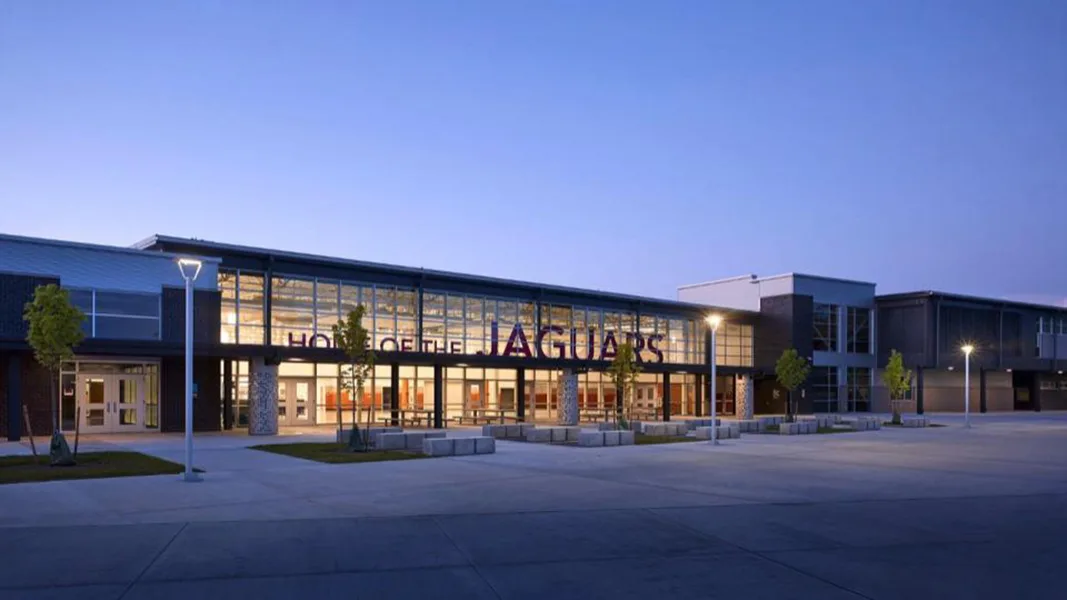Parker Berman
Breaking Down Swing States
In this thirteen-part series WoodinvilleNOW will be investigating and explaining the Swing States that have made recent presidential elections and what clues they offer for elections going forward
If Democrats want to continue their momentum in 2022 and 2024, or Republicans want to stop it, they will have to contend with a map that looks very different from a decade ago
With the dust settling from the 2020 election the results seem to provide more questions than answers. For Democrats, what happened? For republicans, how to continue inroads with minorities. Neither party was given the clear mandate that they hoped for, likely resulting in another two years with little legislative action. However, with redistricting coming for the 2022 cycle it is likely that the electoral distribution will begin to change, and not in favor of Democrats
2016 realignment
2020 gave an answer to the question of the nature of the 2016 election. Was 2016 an outlier where pent-up resentment and a weak democratic candidate shifted votes once only for them to return to normal in 2020? Or was it a sign of changing demographics that would hold for several election cycles? For better or for worse it seems the latter is true – suburbs that were once a bastion of republicanism are moving fast for the Democrats, while the union/non-union split for blue-collar workers seems to fade as that group backs the populous policies of the republican party and the split is more firmly down ethnic lines
Presidential Politics
When it comes to the presidency, we know little about what the race in 2024 will look like. Biden implied during the campaign that he would be a one-term president. Given that the president-elect will be eighty-two at the conclusion if his term and is already the oldest president elect it seems likely he will stick to that promise. Furthermore, democratic leaders may be eager to see a younger nominee as the party is already struggling with a disconnect between an older, more-cautious leadership and a growing, younger, and vocal base. For Democrats to keep the white house in 2024 they will have to contend with a map that is likely to be less favorable. States that Democrats have struggled to win like Texas and Florida are expected to gain electors while states like California, New York, and Illinois, long democratic bastions, will lose seats. competitive states will look different too, and below we will look at current and likely former swing states
Terms and Trends to know
Generally, these pieces will look at vote-shares in reference to the total of the entire votes cast. In certain situations it will consider the “two-party” vote, looking at vote percentages based on raw votes only for Democrats and Republicans. Winning margins are generally referred to compared with the next candidate – for instance of one candidate received 45%, one 43%, and another 12%, the first candidate will be noted as having won by 2% or as having won with a 2% margin. “Points” is shorthand for percentage points. “Red” and “blue” correspond with “Republican” and “Democrat”, “becoming redder” synonymous with “becoming more Republican”, etc. Swing voters refer to voters who may vote for either party depending on circumstances. This does not include voters that generally vote for one party but change under special, relatively extreme circumstances (such as a life-long Republican voting for Biden in 2020 or a life-long Democrat voting for Reagan in 1980), rather voters whose vote is not assured until election day.
Up through 2012 conventional wisdom has held that urban areas voted Heavily Democratic while suburbs were split with Republicans typically holding an edge, especially in wealthier areas. Mostly white Rural areas in the midwest are swing voters but have historical links to Democratic voting, while similar areas in the South and West are solidly Republican. For white working-class, union membership could be a good indicator of Democratic-voting. That has changed with Trump – Democrats have traded losses in rural areas in the midwest for solid gains in the suburbs, resulting in a shift in congressional representation, as well as creating new swing states and districts while diluting the power of older ones.
State #2: North Carolina
In 2008, Barack Obama made history by becoming the first Democrat since Jimmy Carter to carry North Carolina in a U.S. Presidential election. The significance of not just a Democrat but a Black Democrat winning a state in the post-Kennedy south was significant, and Democrats hoped that, like Virginia, North Carolina and its 15 delegates would be in the hands of the party for years to come. On the surface, the state has a lot going for Democrats with a rapidly growing population, a diversified economy, and a large-minority population. However, unlike its northern neighbor, an electoral shift has not been the case for North Carolina. Since 2008, Republicans have carried the state in each presidential election, though there have been some more competitive state races. The Tar Heel state had a Democratic Senator – Kay Hagan – until 2015. Democratic Governor Roy Cooper will begin his second term in January, and throughout his current term, he has held generally high approval ratings. Arguably, given his success in a state where other Democrats have struggled, Cooper makes North Carolina all the more frustrating.
North Carolina is a Southern state, and while culturally that means less than it did 50 years ago, demographic legacies still exist. There are still populations of rural, black voters that keep some counties blue. North Carolina has a long-history as a tobacco growing state, and the region has a higher than average number of non-white voters. Unlike many of the states in this series, North Carolina does not have a single metro that dominates the politics. The two-largest metros are Charlotte and Raleigh-Durham, the latter also often being coined the “research triangle”. Charlotte and Raleigh are connected by Interstate 85 in what is sometimes dubbed the I-85 corridor. These two cities can in a way mirror Milwaukee and Madison in Wisconsin – Charlotte is a bit larger and is in fact the second largest banking city in the country, being the home to the headquarters of Bank of America. Charlotte is also the more conservative of the two metros, with suburban counties where Republicans can usually be assured vote-shares north of 60%. That is not to say it is safe Republican – but as recently as 2004 John Kerry only won Charlotte by about eleven thousand votes. The surrounding counties in Charlotte suburbs like the rest of the country have been trending Democratic, but they were so solidly Republican that the GOP can still enjoy comfortable margins.
Raleigh-Durham meanwhile is decidedly liberal – home to the University of North Carolina’s flagship Chapel Hill campus. The region is well-educated with high levels of college-educated voters, and it is in this region that Democrats try to run up as many votes as they can to make up for losses elsewhere. Durham County was Hillary Clinton’s best in the state in 2016 as she received more than 72% of the vote even as she lost the state by about 3%. Income is also higher in Raleigh than the rest of the state by an average of $12,000, and the region has trended with other with higher-earning areas to lean Democratic. South of Raleigh about an hour is Fayetteville; it is home to Fort Bragg, one of the largest domestic military instillations. Fayetteville is redder than the triangle, but it and Cumberland county still tend to lean blue thanks to a large African American population. Fayetteville is not part of the Raleigh metro for statistical purposes, but it is part of the Raleigh-Durham TV market, involving it in the important ad-spending of the capitol.
Outside of those heavy-hitters the last metro in the state with over a million people is the Piedmont Triad, centered in Greensboro in the heart of tobacco country. This area has generally been fairly friendly to Democrats. The city is 40% Black compared to a state average of 22%, and is often lumped into the greater tobacco-growing region, spanning from Charlotte in the south all the way to the Virginia border. Republicans have made some small gains here nationally but some worry that they may have maxed out their voting base
Finally, the east and west portions of the state are generally low in population and conservative in politics. The Appalachian west, while home to the very-liberal Ashville, is otherwise quite conservative and the first place the GOP was successful in national politics. White House Chief of Staff, Mark Meadows, hails from this region. The rural east sees a north-south divide in voting patterns, mainly due to the larger black population in the North. Following national trends the city of Wilmington is the only part of this region trending left.
Like the rest of the south, North Carolina was a Democratic strong-hold up until the 1960s, when the Civil Rights act shifted support first to segregationist candidates and then to Republicans. Unlike some of its southern neighbors, the state still voted for Lyndon Johnson in 1964. In 1968 Richard Nixon took the votes but in second place was not a Democrat but Segregationist George Wallace. North Carolina voted for fellow Southern-Democrat Jimmy Carter in 1976 but moved to Reagan in 1980. From then on it was a Republican strong-hold for 25 years. Bill Clinton lost narrowly to George H.W. Bush in 1992 as Ross Perot took 13% of the vote, but he did poorer in 1996 to Bob Dole, whose wife Elizabeth later served as Senator from 2002 until 2008. George Bush carried the state by double-digits in both of his elections, which made 2008 surprising. Obama and McCain both fought hard in the state, with the Illinois Senator heavily targeting cities in the rapidly growing I-85 corridor. Obama ultimately won the state by 14,000 votes, about .32%.
Despite not affecting state-wide voting, the Tea-Party wave of 2010 sent a Republican majority to the NC Legislature. Here, the party began redrawing district maps that heavily favored Republicans, a process over which Democratic Governor Bev Perdue had no say. By 2012 Obama was unpopular in the state and Republicans tied Perdue heavily to Obama. She ultimately decided not to run and was replaced with Republican Pat McCroy, while Obama lost the state to Mitt Romney by about 2%. With the governorship in hand, State Republicans passed a voter-ID bill that targeted African American’s with “surgical precision” according to one Judicial opinion. This bill was struck down in 2017, and twice in the last decade, new congressional maps have had to be redrawn for what has been called illegal gerrymandering.
2016 was influenced both by national political trends as well as a close-to-home and controversial piece of legislation. House Bill 2 (HB-2), coined the “bathroom bill”, was signed into law in early February. The bill required that trans-gender individuals be permitted to use only gender-segregated facilities that correspond to their birth-gender. It also struck down a Charlotte anti-LGBT discrimination ordinance, forbid any municipality from enacting a similar ordinance, and forbid counties and cities from raising minimum wage higher than that of the state. The bill brought immediate blow-back to North Carolina as companies and people boycotted the state – costing the state economy an estimated $3.76 billion. Governor McCroy doubled down on the bill, a move that state Democrats saw to put him in a vulnerable position. Even as Clinton lost the state by a 3.66% margin, Democrat Roy Cooper was able to snag the governorship by a narrow .2%. Interestingly, both Trump and Clinton saw decreased margins over their party nominees in 2012. At the same time, Libertarian Gary Johnson took about 2.5% of the vote.
Going into 2020, Democrats were optimistic about the Tar Heel state. Three major statewide elections – Governor, Senator, and President – were all to be held, and they believed that a national wave would favor a trifecta of victories. Instead, Democrats were only able to hold on to the governorship as Cooper sailed to reelection. Freshman Senator Thom Thills was seen especially vulnerable as his principled conservatism is a poor fit for Trump’s Republican party. For much of the race former state senator Cal Cunningham was seen to be favored. That ended when Cunningham was revealed to have engaged in an affair with a married woman, and his lead steadily dropped. In the end, Cunningham underperformed Biden, loosing by about 2%. Biden himself managed to add over 2% to Clinton’s 2016 share, but it was not enough to undercut Trump, who, while not regaining Romney levels, outperformed his 2016 result and eventually won with 1.3% of the vote.
North Carolina’s narrow margin and growing population means that it will likely continue to be a swing state in 2024 barring a sizable political shift. Senior Senator Richard Burr will retire in 2022, and Roy Cooper has been speculated as a favorite to run for the seat. That may be less likely now, as new Lieutenant governor Mark Robinson is an ardent conservative, known for previous statements alleging Michelle Obama is a woman and describing Black Panther as “created by an agnostic jew . . . only to pull shekels out of [black’s] pockets”. Given this, it is likely Cooper will hold his seat until 2024, when he will be term limited and retire. Demographic shifts have favored Democrats and it is highly unlikely either party will see the margins about 5% in elections to come, but the fact remains that the state is still easily winnable for Republicans. It will likely be easier for the GOP in 2024, as they simply have to stop their erosion as opposed to flip back voters. The 2022 Senate election will likely be the test – if the Democrats can flip it the state is on-track to vote blue in 2024, if not, Republicans will likely still be favored.





